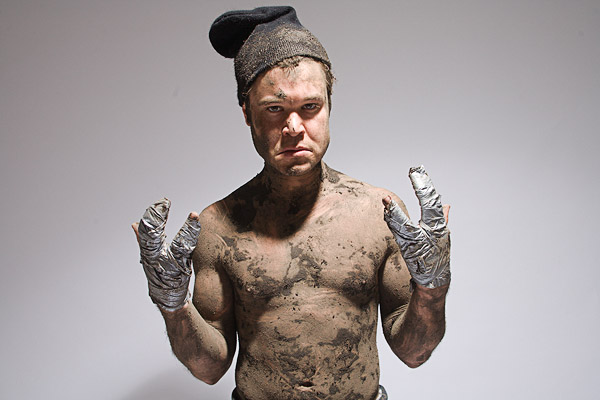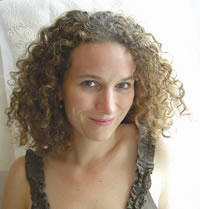THEATER: “Animal Farm” from Page to Stage
Theater critic Christy DeSmith offers her take on Jon Ferguson's ambitious staging of the classic dystopian George Orwell allegory, "Animal Farm." She finds it to be a deeply flawed but, nonetheless, provocative and worthwhile bit of theater.




TO BE ENTIRELY FRANK, I had a tough time sitting through this play. For one, there’s the disturbing source material, George Orwells 1945 book Animal Farm. This well-known allegorical indictment of Communism (Stalinism, to be precise) recounts the tale of a group of farm animals who overthrow their farmer to build a new regime, run by and for the animals themselves. Their utopian dreams turn nightmarish as these one-time serfs come to assumeeven surpasstheir former oppressor’s dictatorial, repressive tendencies.
The production’s script (adapted from the Orwell novel by Ian Woolridge) is in desperate need of doctoring. As it is, theres just too much stumping, too much explaining going on. A surfeit of scenes has the animals clustered in circles as they discuss, at length, the orders of the daydivision of labor, food rations. But thats the problem with Communist revolution, right? Too many damn meetings!
A successful stage or film adaptation of a book will rely more heavily on dialogue than lifted pages of expository text. In this production, theres too little conversational back and forth and too much standing around, listening to a blowhard pig regurgitate the books long passages. Whenever theres a boss-man on the premises, he will inevitably find his way to the center of the stage so he can barrel his chest and make a decree. That may be true-to-life and its a terrifying prospect, but it doesnt make for terrific theater.
As I watched the play unfold, I was particularly surprised to find this was a static universe, especially when considering the physical-theater proclivities of the productions immensely talented director (and the Southern Theaters newly appointed Theater Programming Director), Jon Ferguson. Surely the books workhorse themewith the animals slaving away to construct a windmillcould have easily lent itself to movement theater, if not a Yang Ban Xi-style chorus line of hammerers and diggers. But, alas, in the end, long meetings consistently intrude upon these animals workdays. Characters give plenty of lip service to manual labor, but we never see them in the actual act of working. I kept waiting to see more action, more spectacle, more movement from these kinetically gifted performers.
And yet, despite the productions myriad imperfections, I found Animal Farm to be entirely worth my while. But Ill get to its redeeming qualities in a minute. First, a few notes on the shows notable accoutrements:
_________________________________________________
Characters give plenty of lip service to manual labor, but we never see them in the actual act of working. I kept waiting to see more action, more spectacle, more movement from these kinetically gifted performers.
_________________________________________________
Ferguson and his designers, set designer Erica Zaffarano and prop designer Jim Hibbeler, built the shows physical environment using little more than a rope, a bucket, a ladder, and a rickety fence. Ron Alberts lighting design keeps the scene dim, as if this scanty farm resides in perpetual dusk. The actors are not dressed to resemble the animals they portray. Rather, theyre dressed in overalls and prairie dressesjust like human farmersand rely only on the occasional snort or heehaw to paint these characters animal tendencies. Which is the horse and which the donkey? If an audience member isnt intimately familiar with the book, he will only gradually match the character with the species. As a matter of fact, two of the friends who accompanied me to the theater last Sunday evening found this facet of the show terribly distractingbut I enjoyed the lack of overt identifiers. For one, dressing humans as animals would have lent an inappropriate campiness to what is an otherwise weighty allegory. Whats more, the ambiguity on stage mirrors the somewhat arbitrary establishment of hierarchies in the animals’ takeover schemeof course, the pigs are among the smartest in the barnyard, and so theyre sure to rise to the top. But the fate of, say, a hard-working horse is anybodys guess.
What happens next on the Animal Farm is legend, with a plot twist familiar to high-school English students everywhere: Napoleon, a villainous boar, leverages his cult of personality to establish a totalitarian state upheld by the back-breaking labor of his idealistic animal cohort. Soon, the utopian (Marxist) collective these animals envisioned for themselvesin which each is created equal and all voices are heardis as good as (Stalinist) manure. By the end of the story, the animals are working harder and eating less than their counterparts at the human-run farm next door.
No matter what her political persuasion, a theatergoer will, during the course of this grueling two-hour performance, recognize countless parallels with the present situation in the United States. Is American-style Democracy equally ill-fated? In a roundabout way, that is the question Ferguson asks with his production. In this critic’s opinion, it is both noble and brave of Ferguson to do so: Even with the recent election of Barack Obama, its hard to deflect the argument that our nationthe one that damns all who hate freedomhas, over time, become less concerned with individual rights. In other words, were just like the pigs!
Thankfully, even in the midst of the heavy politics of the play, there is an occasional dash of comic relief: In one hilarious scene, a trio of doltish sheepthe bottom of the heap in this emerging hierarchyare asked to recite the communitys new mantra: Two legs bad. Four legs good. These so-called equal citizens (played with excellent comic timing by strong physical actors) exchange blank stares and pat at their mouths.
But overall, in spite of the production’s more ponderous moments, watching it was a core-rattling experience. Animal Farm sent me reeling out the Southern Theaters front doors and straight into the arms of the adjacent Town Hall Brewery. Once safely seated, I proceeded to drown my jitters with a pint of ale which was accompanied by a lively post-show discussion with the six friends who accompanied me to this pre-election performance. As our conversation stretched into the wee hours, covering everything from the productions considerable flaws to the impending election and the startling relevance of this aging story, I had a thought: This was the most rigorous debate about theater Id had in a long while. If Animal Farm wasnt a complete success as a piece of entertainment, it was, at the very least, a runaway hit in terms of provoking thought and conversation.
About the writer: Christy DeSmith is a former editor at The Rake. She is also a freelance theater critic and was recently named an affiliated writer for 2007-08 by the Theatre Communications Group and American Theatre magazine.
What: George Orwell’s Animal Farm adapted by Ian Wooldridge, by Jon Ferguson and Ktron
Where: Southern Theater, Minneapolis, MN
When: Performances run through November 16, 2008
Tickets: $22